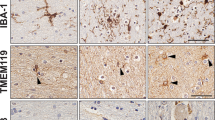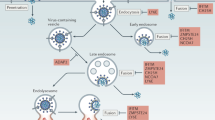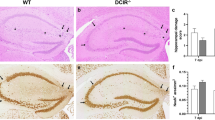Abstract
The TAM receptors Tyro3, Axl and Mertk are receptor tyrosine kinases that dampen host innate immune responses following engagement with their ligands Gas6 and Protein S, which recognize phosphatidylserine on apoptotic cells. In a form of apoptotic mimicry, many enveloped viruses display phosphatidylserine on the outer leaflet of their membranes, enabling TAM receptor activation and downregulation of antiviral responses. Accordingly, we hypothesized that a deficiency of TAM receptors would enhance antiviral responses and protect against viral infection. Unexpectedly, mice lacking Mertk and/or Axl, but not Tyro3, exhibited greater vulnerability to infection with neuroinvasive West Nile and La Crosse encephalitis viruses. This phenotype was associated with increased blood-brain barrier permeability, which enhanced virus entry into and infection of the brain. Activation of Mertk synergized with interferon-β to tighten cell junctions and prevent virus transit across brain microvascular endothelial cells. Because TAM receptors restrict pathogenesis of neuroinvasive viruses, these findings have implications for TAM antagonists that are currently in clinical development.
This is a preview of subscription content, access via your institution
Access options
Subscribe to this journal
Receive 12 print issues and online access
$209.00 per year
only $17.42 per issue
Buy this article
- Purchase on Springer Link
- Instant access to full article PDF
Prices may be subject to local taxes which are calculated during checkout






Similar content being viewed by others
References
Lemke, G. Biology of the TAM receptors. Cold Spring Harb. Perspect. Biol. 5, a009076 (2013).
Cosemans, J.M.E.M. et al. Potentiating role of Gas6 and Tyro3, Axl and Mer (TAM) receptors in human and murine platelet activation and thrombus stabilization. J. Thromb. Haemost. 8, 1797–1808 (2010).
Prieto, A.L., Weber, J.L. & Lai, C. Expression of the receptor protein-tyrosine kinases Tyro3, Axl and Mer in the developing rat central nervous system. J. Comp. Neurol. 425, 295–314 (2000).
Lew, E.D. et al. Differential TAM receptor–ligand–phospholipid interactions delimit differential TAM bioactivities. eLife 3, e03385 (2014).
Caraux, A. et al. Natural killer cell differentiation driven by Tyro3 receptor tyrosine kinases. Nat. Immunol. 7, 747–754 (2006).
Paolino, M. et al. The E3 ligase Cbl-b and TAM receptors regulate cancer metastasis via natural killer cells. Nature 507, 508–512 (2014).
Holland, S.J. et al. R428, a selective small molecule inhibitor of Axl kinase, blocks tumor spread and prolongs survival in models of metastatic breast cancer. Cancer Res. 70, 1544–1554 (2010).
Holland, S.J. et al. Multiple roles for the receptor tyrosine kinase Axl in tumor formation. Cancer Res. 65, 9294–9303 (2005).
Fraineau, S. et al. The vitamin K–dependent anticoagulant factor, protein S, inhibits multiple VEGF-A–induced angiogenesis events in a Mer- and SHP2-dependent manner. Blood 120, 5073–5083 (2012).
Angelillo-Scherrer, A. et al. Role of Gas6 receptors in platelet signaling during thrombus stabilization and implications for antithrombotic therapy. J. Clin. Invest. 115, 237–246 (2005).
Rothlin, C.V., Ghosh, S., Zuniga, E.I., Oldstone, M.B.A. & Lemke, G. TAM receptors are pleiotropic inhibitors of the innate immune response. Cell 131, 1124–1136 (2007).
Prasad, D. et al. TAM receptor function in the retinal pigment epithelium. Mol. Cell. Neurosci. 33, 96–108 (2006).
Scott, R.S. et al. Phagocytosis and clearance of apoptotic cells is mediated by MER. Nature 411, 207–211 (2001).
Zagórska, A., Traves, P.G., Lew, E.D., Dransfield, I. & Lemke, G. Diversification of TAM receptor tyrosine kinase function. Nat. Immunol. 15, 920–928 (2014).
Sheridan, C. First Axl inhibitor enters clinical trials. Nat. Biotechnol. 31, 775–776 (2013).
Graham, D.K., DeRyckere, D., Davies, K.D. & Earp, H.S. The TAM family: phosphatidylserine-sensing receptor tyrosine kinases gone awry in cancer. Nat. Rev. Cancer 14, 769–785 (2014).
van den Brand, B.T. et al. Therapeutic efficacy of Tyro3, Axl and Mer tyrosine kinase agonists in collagen-induced arthritis. Arthritis Rheum. 65, 671–680 (2013).
Meertens, L. et al. The TIM and TAM families of phosphatidylserine receptors mediate dengue virus entry. Cell Host Microbe 12, 544–557 (2012).
Bhattacharyya, S. et al. Enveloped viruses disable innate immune responses in dendritic cells by direct activation of TAM receptors. Cell Host Microbe 14, 136–147 (2013).
Shibata, T. et al. Axl receptor blockade ameliorates pulmonary pathology resulting from primary viral infection and viral exacerbation of asthma. J. Immunol. 192, 3569–3581 (2014).
Subramanian, M. et al. An AXL–LRP-1–RANBP9 complex mediates DC efferocytosis and antigen cross-presentation in vivo. J. Clin. Invest. 124, 1296–1308 (2014).
Daniels, B.P. et al. Viral pathogen-associated molecular patterns regulate blood-brain barrier integrity via competing innate cytokine signals. MBio 5, e01476–14 (2014).
McJunkin, J.E. et al. La Crosse encephalitis in children. N. Engl. J. Med. 344, 801–807 (2001).
Wang, T. et al. Toll-like receptor 3 mediates West Nile virus entry into the brain causing lethal encephalitis. Nat. Med. 10, 1366–1373 (2004).
Zhu, D. et al. Protein S controls hypoxic-ischemic blood-brain barrier disruption through the TAM receptor Tyro3 and sphingosine-1-phosphate receptor. Blood 115, 4963–4972 (2010).
Chung, W.-S. et al. Astrocytes mediate synapse elimination through MEGF10 and MERTK pathways. Nature 504, 394–400 (2013).
Brinton, M.A. Replication cycle and molecular biology of the West Nile virus. Viruses 6, 13–53 (2013).
Lazear, H.M. et al. Interferon-λ restricts West Nile virus neuroinvasion by tightening the blood-brain barrier. Sci. Transl. Med. 7, 284ra59 (2015).
Sheehan, K.C. et al. Blocking monoclonal antibodies specific for mouse IFN-α/β receptor subunit 1 (Ifnar-1) from mice immunized by in vivo hydrodynamic transfection. J. Interferon Cytokine Res. 26, 804–819 (2006).
Etienne-Manneville, S. & Hall, A. Rho GTPases in cell biology. Nature 420, 629–635 (2002).
Mahajan, N.P. & Earp, H.S. An SH2 domain–dependent, phosphotyrosine-independent interaction between Vav1 and the Mer receptor tyrosine kinase: a mechanism for localizaing guanine nucleotide–exchange factor action. J. Biol. Chem. 278, 42596–42603 (2003).
Gautier, E.L. et al. Gene-expression profiles and transcriptional regulatory pathways that underlie the identity and diversity of mouse tissue macrophages. Nat. Immunol. 13, 1118–1128 (2012).
Ji, R. et al. TAM receptors affect adult brain neurogenesis by negative regulation of microglial cell activation. J. Immunol. 191, 6165–6177 (2013).
Tibrewal, N. et al. Autophosphorylation docking site Tyr867 in Mer receptor tyrosine kinase allows for dissociation of multiple signaling pathways for phagocytosis of apoptotic cells and down-modulation of lipopolysaccharide-inducible NF-κB transcriptional activation. J. Biol. Chem. 283, 3618–3627 (2008).
Brien, J.D., Uhrlaub, J.L. & Nikolich-Žugich, J. Protective capacity and epitope specificity of CD8+ T cells responding to lethal West Nile virus infection. Eur. J. Immunol. 37, 1855–1863 (2007).
Shrestha, B. & Diamond, M.S. Role of CD8+ T cells in control of West Nile virus infection. J. Virol. 78, 8312–8321 (2004).
Purtha, W.E. et al. Antigen-specific cytotoxic Tlymphocytes protect against lethal West Nile virus encephalitis. Eur. J. Immunol. 37, 1845–1854 (2007).
Li, Q., Lu, Q., Lu, H., Tian, S. & Lu, Q. Systemic autoimmunity in TAM triple-knockout mice causes inflammatory brain damage and cell death. PLoS ONE 8, e64812 (2013).
Burstyn-Cohen, T., Heeb, M.J. & Lemke, G. Lack of protein S in mice causes embryonic lethal coagulopathy and vascular dysgenesis. J. Clin. Invest. 119, 2942–2953 (2009).
Verma, A., Warner, S.L., Vankayalapati, H., Bearss, D.J. & Sharma, S. Targeting Axl and Mer kinases in cancer. Mol. Cancer Ther. 10, 1763–1773 (2011).
Suárez, R.M. et al. Inhibitors of the TAM subfamily of tyrosine kinases: synthesis and biological evaluation. Eur. J. Med. Chem. 61, 2–25 (2013).
Lu, Q. & Lemke, G. Homeostatic regulation of the immune system by receptor tyrosine kinases of the Tyro3 family. Science 293, 306–311 (2001).
Diamond, M.S., Shrestha, B., Marri, A., Mahan, D. & Engle, M. B cells and antibody play critical roles in the immediate defense of disseminated infection by West Nile encephalitis virus. J. Virol. 77, 2578–2586 (2003).
Samuel, M.A. et al. PKR and RNase L contribute to protection against lethal West Nile virus infection by controlling early viral spread in the periphery and replication in neurons. J. Virol. 80, 7009–7019 (2006).
Thackray, L.B. et al. Critical role for interferon regulatory factor 3 (IRF-3) and IRF-7 in type I interferon-mediated control of murine norovirus replication. J. Virol. 86, 13515–13523 (2012).
Mehlhop, E. & Diamond, M.S. Protective immune responses against West Nile virus are primed by distinct complement activation pathways. J. Exp. Med. 203, 1371–1381 (2006).
Diamond, M.S. et al. A critical role for induced IgM in the protection against West Nile virus infection. J. Exp. Med. 198, 1853–1862 (2003).
Lazear, H.M. et al. Pattern recognition receptor MDA5 modulates CD8+ T cell–dependent clearance of West Nile virus from the central nervous system. J. Virol. 87, 11401–11415 (2013).
Thackray, L.B. et al. Interferon regulatory factor 5 (IRF5)-dependent immune responses in the draining lymph node protect against West Nile virus infection. J. Virol. 88, 11007–11021 (2014).
Howell, G.R. et al. Radiation treatment inhibits monocyte entry into the optic nerve head and prevents neuronal damage in a mouse model of glaucoma. J. Clin. Invest. 122, 1246–1261 (2012).
Acknowledgements
This work was supported by US National Institutes of Health (NIH) grants U19 AI083019 (M.S.D. and R.S.K.), R01 AI101400 (M.S.D. and G.L.), R01 NS052632 (R.S.K.) and R01 NS085296 (G.L.). J.J.M. was supported by an NIH training grant (T32-AR007279) and a Rheumatology Research Foundation Scientist Development Award. B.P.D. was supported by a National Science Foundation Graduate Research Fellowship (DGE-1143954) and an NIH predoctoral fellowship (F31-NS07866). E.D.L. was supported by postdoctoral fellowships from the Leukemia and Lymphoma Society and the Nomis Foundation. We thank A. Pekosz (Johns Hopkins University) for the original LACV strain.
Author information
Authors and Affiliations
Contributions
J.J.M., B.P.D., H.M.L., G.L., R.S.K. and M.S.D. designed the experiments; J.J.M., B.P.D., B.S., J.L.P.-M., H.M.L. and M.J.G. performed the experiments; E.D.L. and G.L. contributed essential reagents; and J.J.M. and M.S.D. wrote the initial draft of the manuscript, with all other authors providing critical comments and editorial changes.
Corresponding author
Ethics declarations
Competing interests
The authors declare no competing financial interests.
Supplementary information
Supplementary Text and Figures
Supplementary Figures 1–8 (PDF 2099 kb)
Rights and permissions
About this article
Cite this article
Miner, J., Daniels, B., Shrestha, B. et al. The TAM receptor Mertk protects against neuroinvasive viral infection by maintaining blood-brain barrier integrity. Nat Med 21, 1464–1472 (2015). https://doi.org/10.1038/nm.3974
Received:
Accepted:
Published:
Issue Date:
DOI: https://doi.org/10.1038/nm.3974
This article is cited by
-
Mertk Reduces Blood-Spinal Cord Barrier Permeability Through the Rhoa/Rock1/P-MLC Pathway After Spinal Cord Injury
Neuroscience Bulletin (2024)
-
Mertk-expressing microglia influence oligodendrogenesis and myelin modelling in the CNS
Journal of Neuroinflammation (2023)
-
Regulation of brain endothelial cell physiology by the TAM receptor tyrosine kinase Mer
Communications Biology (2023)
-
Gas6 Promotes Microglia Efferocytosis and Suppresses Inflammation Through Activating Axl/Rac1 Signaling in Subarachnoid Hemorrhage Mice
Translational Stroke Research (2023)
-
The Multifaceted Roles of TAM Receptors during Viral Infection
Virologica Sinica (2021)



